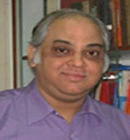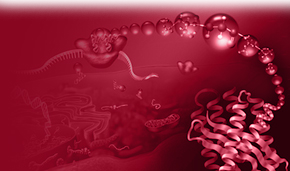|
|

|
|
Science Sparks @ ACTREC
|
 4th July 2022 4th July 2022 |
Vol. No. 11; Issue No. 533 |
|
|
Publications
|
|
1. Starr NE, Moore JN, Shreckengost CSH, Fernandez K, Ambulkar RP, Capo-Chichi N, Varallo JE, Ademuyiwa AO, Krouch S, Rana PS, Ingabire JA, Weiser TG, Mammo TN, Evans FM (2022). Perioperative provider safety in the pandemic: Development, implementation and evaluation of an adjunct COVID-19 surgical patient checklist. Anaesthesia and Intensive Care.
2. Sharma KS, Raju M S, Phapale S, Valvi SK, Dubey AK, Goswami D, Ray D, De A, Phadnis PP, Aswal VK, Vatsa R, Sarma HD (2022). Multimodal applications of zinc gallate-based persistent luminescent nanoparticles in cancer treatment: Tumor margining, diagnosis, and boron neutron capture therapy. ACS Applied Bio Materials.
3. Dutta S, Khan N, Bose K, Poddar N (2022). A comparative in silico study to detect the effect of food-additives on metabolic protein and its perturbations compensated by osmolytes. International Journal of Biological Macromolecules.
|
|
|
|
|
Interesting Reads
|
|
Dutta S, Polavaram NS, Islam R, Bhattacharya S, Bodas S, Mayr T, Roy S, Albala SAY, Toma MI, Darehshouri A, Borkowetz A, Conrad S, Fuessel S, Wirth M, Baretton GB, Hofbauer LC, Ghosh P, Pienta KJ, Klinkebiel DL, Batra SK, Muders MH, Datta K. Neuropilin-2 regulates androgen-receptor transcriptional activity in advanced prostate cancer. Oncogene, 2022.
|
|
|
Legends of Science
|

|
Amitabha Chattopadhyay
Amitabha Chattopadhyay obtained his Ph.D. from the state university of New York, USA, in 1987. His primary research was on monitoring organization, dynamics, and function in biological membranes in healthy and diseased conditions. He showed that membrane cholesterol is essential for the role of the serotonin1A receptor, whose activity is impaired in pathogenic conditions such as the Smith-Lemli-Opitz Syndrome. His group developed innovative techniques using fluorescence spectroscopy for monitoring solvent relaxation in membranes and membrane mimetic media. He was elected Fellow of the National Academy of Sciences, Allahabad, in 1998, and the Indian Academy of Sciences, Bengaluru, in 1999. He was the recipient of the Sreenivasaya Memorial Award for the Society of Biological Chemists in 2000; The S S Bhatnagar Award in 2001.
|
|
| |

|
Sandeep Verma
Sandeep Verma, a chemical biologist, obtained his Ph.D. from the University of Illinois Medical Center, Chicago, in 1994. His research interest includes ordered peptide assemblies, new antimicrobials, and small molecule stem cell interaction. His significant contribution was developing bio-inspired soft matter and protocols for using biological building blocks as diagnostic tools for diseases. He is an elected fellow of the Indian National Science Academy, Indian Academy of Sciences, and National Academy of Sciences; senior fellow of the Zukunftskolleg, University of Konstanz, Germany. He was awarded the Silver Medal of the Chemical Research Society of India in 2017. He received the Shanti Swarup Bhatnagar Award in 2010.
|
|
| |
|
|
|
|
Do You Know?
In 2005, two studies showed that the drug bortezomib(Velcade) shrinks tumors in nearly half of patients with mantle cell lymphoma, one of the rarest forms of non-Hodkin lymphoma.
|

|
|
|
Cancer News
|
|
Immune cells anchored in tissues offer unique defenses against pathogens and cancers
|
|
29 June 2022, EurekAlert
|
|
The new study examined tissue-resident memory T cells residing in mouse organs such as the kidney, spleen, small intestine and liver. The collective results from across these disparate tissue environments generated insights into how each T cell population is governed by unique processes based on the “tissue of residence.”...
|
|
|
| |
|
Researchers discover new leukemia-killing compounds
|
|
30 June 2022, MedicalXpress
|
|
Researchers from Rice University and the University of Texas MD Anderson Cancer Center have discovered potential new drugs that work in concert with other drugs to deliver a deadly one-two punch to leukemia...
|
|
|
| |
|
Tumor cell population discovered responsible for colon cancer relapse
|
|
01 July 2022, Technology Networks
|
|
This study has been carried out using mainly organoids, which are samples of tumours from patients (or from mouse models of advanced cancer) that can be grown in the laboratory and that reproduce the complexity of the tumour in terms of its three-dimensional structure and variability of cell types... |
|
|
| |
|
|
|
|
|
|
� 2022 Advanced Centre for Treatment, Research and Education in Cancer (ACTREC)
|
|
